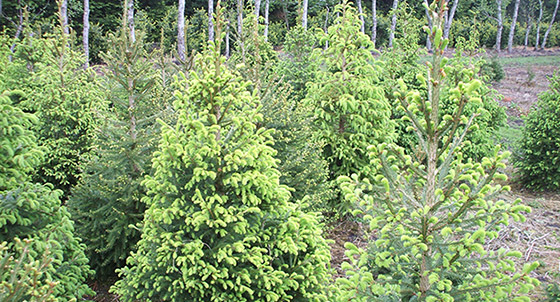Norway Spruce (Picea Abies)
Norway Spruce and Fishbone
Originally Norway Spruce grew in northern, eastern, and central Europe. Around 1730 it was introduced into Denmark. From early 19th century Norway Spruce was planted on large areas in Jutland. Norway Spruce derives from an old Nordic word meaning fishbone!
A slim tree:
Norway Spruce is an upright tree, which may reach a height of 40 meters. It grows well on sandy soil and is one of the most popular trees in Danish forestry and also one of the most popular Christmas trees, number two after Nordmann Fir. Norway Spruce is also one of the most important trees in Danish forestry.
The first Danish Christmas Tree
In 1808 in a Danish manor-house the very first Norway Spruce was lit in the presence of the famous author Hans Christian Andersen. He later wrote a fairy tale about the Christmas tree. The idea of bringing a Norway Spruce into the house originated from Germany. It spread throughout the country during the following decades. Today any decent family with a bit of self respect bring a tree into the sitting room and decorate it with candles and all sorts of decorations. Among members of the family there is always a discussion about the definition of “a real Christmas Tree”. Norway Spruce is so far the top priority. Norway Spruce is also available in a flower pot. In that way it will last longer, and one may have the pleasure throughout most of the month of December.
This is how we produce Norway Spruce
We send seeds to a nursery in Germany, where the baby trees are looked after and nursed professionally. With the good quality of plants, we establish new cultures annually. We begin to shape them after a few years, with the aim of getting a homogeneous product. This is partly a manual work and also done by a machine. The more we work with them, the more cone-shaped they become.
Over the years the shape of Norman Spruce has changed from a tiered into a shape cut tree - almost like a Disney tree. They go primarily to the European market.
We supply Norman Spruce in all sizes. They come felled, or with roots in a pot or with a lump in a net. Finally they run through a net machine and are packed on pallets.


